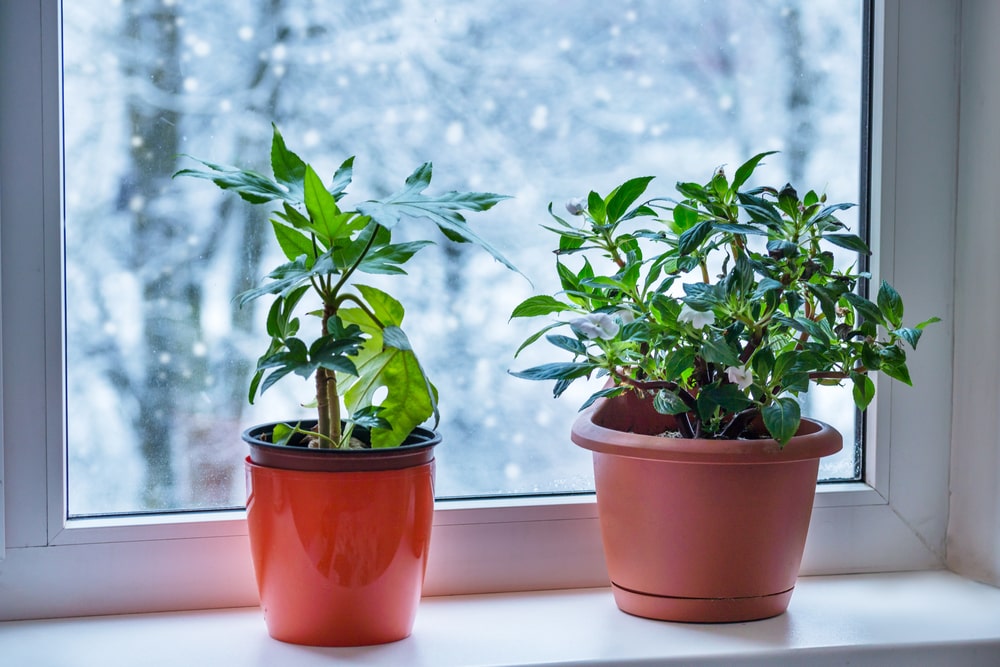Okay, so you’ve pulled all your houseplants back in for the winter. Now what? Well, I’m happy to say not much.
What to Remember
We must remember that winter means one thing to plants—less sun! Plants rely on chlorophyll, which is activated by sunlight. In the winter, when days are short and the sunlight is much less intense, plants are not doing as much active growing as in other times of the year. So what does less sun mean to our plants?
How to Modify Care
Because they are not doing much active growing or blooming, if any, you need to modify your care. First, get as much light as possible. Don’t just open your window blinds. Raise them completely. If necessary, augment with a grow light.
When and How to Water
It’s even more important to check the soil with your finger before you water. Plants in four- and six-inch pots should dry out an inch or two between waterings. Plants in eight-inch pots and larger should dry out three to five inches between waterings. Citrus and ficus trees should dry out about halfway between waterings. Cacti and succulents should dry out almost down between waterings.
After you water, check their saucers about ten or fifteen minutes later to be sure they are not standing in water.
When to Feed Your Plants
The lower-intensity sunlight is also why we generally don’t feed indoor plants much, if at all, over the winter. Light feeding is okay at one-half strength if a plant is actively growing—an African violet or an orchid getting ready to bloom. Otherwise, leave them alone. Don’t feed until late winter—mid to end February,
The Winter Solstice (the shortest day of the year) is December 21st. By mid-February, the sunlight is beginning to get a bit brighter, and we’re getting more than an hour more of sunlight a day. When this happens, it’s time to begin feeding.
When and How to Repot and Prune
Another thing we’re not doing this time of year is repotting plants. Again, wait until the middle of February for that. And remember, when you do repot, use the correct potting soil for the type of plant and never go up more than one to two inches. One inch bigger for four to six-inch diameter plants, up to two inches bigger for eight-inch and bigger plants,
If you have a dead branch or some yellow leaves, you can remove them in the winter but don’t do any significant shaping or pruning at this time of year. Most plants can be pruned safely and efficiently again in mid-February.
Let’s Enjoy Those Beautiful Plants!
So, what can you do this time of year? Enjoy your beautiful houseplants! You might even consider talking to your plants. Yes, they are listening even though they’re resting for the winter.

